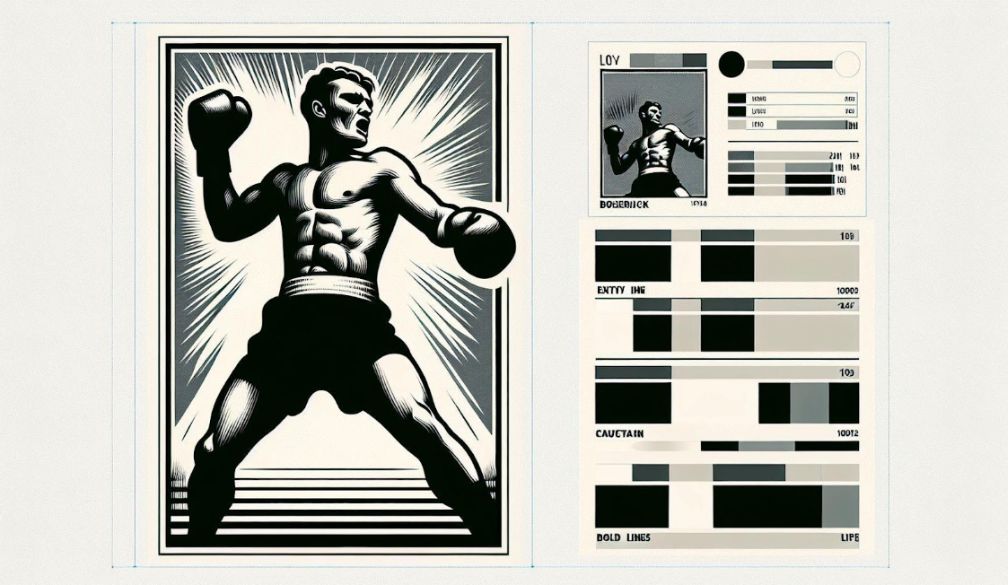The Power And Legacy Of Sports Posters

Sports posters have long held a significant place in both sports culture and popular culture at large. From the early days of boxing matches to modern-day football championships, posters have served as powerful visual artifacts that capture the spirit of the moment. They promote events, celebrate athletes, and immortalize iconic moments in sports history.
Whether hanging in a teenager's bedroom or displayed in a sports bar, these posters serve as a visual testament to the passion and excitement that sports evoke. They are not just promotional tools; they are pieces of art that resonate with fans on an emotional level. The enduring appeal of sports posters lies in their ability to encapsulate the essence of a moment, a player, or a game in a single image.
But what makes these posters so impactful? Is it the design, the subject matter, or the cultural context in which they are created? As we explore the world of sports posters, we will uncover the elements that contribute to their lasting legacy and continued relevance.
Historical evolution of sports posters
The history of sports posters dates back to the early 20th century when they were primarily used to advertise boxing matches and wrestling bouts. These early posters were often simple, featuring basic typography and monochromatic images. However, they quickly evolved to become more elaborate and visually striking.
In the 1920s and 1930s, the rise of professional sports leagues and the increasing popularity of events like the Olympics led to a surge in the production of sports posters. Artists began to experiment with bold colors, dynamic compositions, and innovative design techniques. Posters from this era often featured stylized depictions of athletes in action, capturing the energy and excitement of the sport.
The mid-20th century saw the emergence of iconic sports posters that have since become cultural touchstones. One notable example is the 1968 Mexico City Olympics poster, designed by Lance Wyman. Its vibrant colors and modernist design elements set a new standard for sports poster art. Similarly, the 1972 Munich Olympics poster by Otl Aicher employed a minimalist aesthetic that emphasized clarity and simplicity.
As the decades progressed, sports posters continued to evolve in both style and purpose. The 1980s and 1990s saw a shift towards more commercialized and mass-produced posters, often featuring high-profile athletes and sponsored by major brands. These posters were not just about promoting events; they were also about selling merchandise and building athlete personas.
Today, sports posters have embraced digital technology, allowing for greater creative freedom and more sophisticated design techniques. The use of digital tools has enabled artists to experiment with new visual styles and create posters that are more visually engaging and impactful.
Iconic sports posters and their stories
One of the most famous sports posters of all time is the 1986 World Cup poster featuring Diego Maradona. The poster captures Maradona in mid-action, his eyes focused and determined. This image became symbolic of Argentina's victory and Maradona's legendary "Hand of God" goal.
Another iconic poster is the 1992 "Dream Team" poster, featuring the U.S. men's basketball team that dominated the Barcelona Olympics. The poster showcases the star-studded lineup, including Michael Jordan, Magic Johnson, and Larry Bird, standing together in their Team USA uniforms. This poster not only celebrated the team's achievements but also marked a turning point in the global popularity of basketball.
The "Muhammad Ali vs. Sonny Liston" poster from 1965 is another classic. It captures the intense rivalry and anticipation surrounding one of the most famous boxing matches in history. The poster's bold typography and striking imagery of Ali standing over Liston became an enduring symbol of Ali's dominance in the sport.
These posters are more than just images; they tell stories of triumph, rivalry, and the indomitable spirit of athletes. They capture moments that resonate with fans and become part of the collective memory of sports history.








